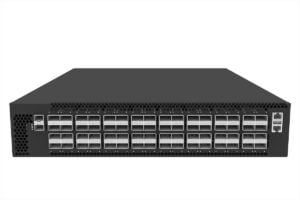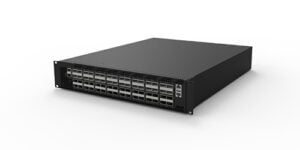Table of Contents
Leaf-spine architecture is composed of a leaf layer and a spine layer. The leaf layer includes Layer 2 switches (leaf switches) for connecting servers and storage devices; the spine layer includes Layer 3 switches (spine switches) for routing and forwarding, which is the backbone of the network.
The traditional data center computing network consists of an access layer, an aggregation layer, and a core layer, with north-south traffic as the mainstay.Traditional network structures have supported various types of data centers for a long time. However, with the rapid growth of new applications and data volume, the scale of data centers keeps expanding, and the requirements for network architecture are also increasing. East-west traffic has gradually become the mainstream mode in data centers. Therefore, a new network topology architecture — Leaf-spine structure is born in data center. So what is a leaf-spine network architecture? What are its advantages? How to build hyper-scale leaf-spine architecture? This article will focus on everything you need to know about leaf-spine network architecture.
What is Traditional Three-Tier Network Architecture
The figure shows the typical topology of the traditional three-layer network architecture:
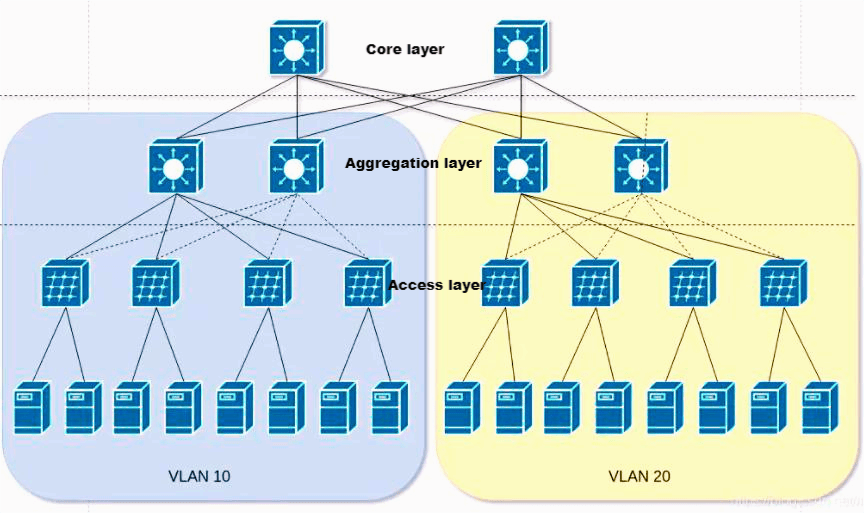
Access Layer: Access switches are usually located on Top of the Rack, so they are also referred to as ToR (Top of Rack) switches, which physically connect to servers.
Aggregation layer: An aggregation switch connects to access switches under the same Layer 2 network (VLAN) and provides other services, such as firewall, SSL offload,and network analysis,etc. It can be a Layer 2 or Layer 3 switch.
Core Layer: The core switch provides high-speed forwarding of packets in and out of the data center, and provides connectivity for multiple Layer 2 local area networks (VLANs).The core switch provides a resilient Layer 3 network for the entire network.
Disadvantages of Traditional Three-Tier Network Architecture
- Waste of bandwidth: In order to prevent loops, the STP protocol is usually run between the aggregation layer and the access layer, so that only one uplink of the access switch actually carries traffic, and other uplinks will be blocked (such as The dotted line in the figure), resulting in a waste of bandwidth;
- Large-scale networks are difficult to arrange: As the network scale expands and data centers are distributed in different geographical locations, VMS must be created and migrated in any place and its network attributes such as IP address, gateway, etc. remain unchanged, which requires the support of fat Layer 2 . In the traditional structure, migration cannot be performed.
- East-west traffic deficiency : The three-tier network architecture is mainly designed for north-south traffic, although it also supports east-west traffic, its deficiency is obvious. When there is a large amount of east-west traffic, the pressure on the aggregation and core switch will greatly increase, and the network scale and performance will be limited to the aggregation and the core layer.
- Making enterprises fall into the dilemma of cost and scalability: To support a large-scale high-performance network, a large number of aggregation and core layer devices are required, which not only leads to high costs for enterprises, but also requires that the network scale must be planned in advance when building the network. When the network scale is small, resources will be wasted, and when the network scale continues to expand, it will be difficult to expand the capacity.
What is Leaf-Spine Architecture

As shown in the figure above, the leaf-spine network architecture is composed of a leaf layer and a spine layer. The leaf layer includes Layer 2 switches (leaf switches) for connecting servers and storage devices; the spine layer includes Layer 3 switches (spine switches) for routing and forwarding, which is the backbone of the network.
Leaf-spine architecture is a complex design that can be difficult to understand. Freelance writers from Darwinessay.net can help companies explain the architecture to their customers and partners by writing essays that explain the concept and benefits of leaf-spine architecture in plain language.
What is a Characteristic of Spine and Leaf Architecture
In the Spine-Leaf network, the network is simplified from the third level to the second level, and through the full-mesh connection built between the spine and leaf switches. It fully utilizing the very mature load sharing technology of the IP network (ie ECMP Routing, Equal- Cost Multi Path Routing), successfully resolved the problems that the three-level architecture cannot solve:
- The switching domain (he layer 2 broadcast domain) is limited to the part below the leaf switch, no longer needs STP protocol for loop detection, and makes full use of bandwidth;
- Enable bandwidth expanding horizontally: If the bandwidth is insufficient, increase the number of spine switches to horizontally expand bandwidth;
- Easy to expand the scale of the network, only need to expand the spine switch and the corresponding Leaf switch to expand the scale of the underlying support network;
- Lower performance requirements for a single switch: the north-south traffic can go out from the leaf node or the spine node, and the east-west traffic is distributed on multiple paths, reducing the performance requirements for a single switch.
- The communication between virtual computing nodes is carried on the underlying support network in a virtual network mode, so that the convenience of the cloud and the number of virtual computing nodes are no longer limited by the underlying support network;
- Applications in the cloud can be migrated freely within the reachable range of the virtual network, and the IP address can be guaranteed not to change during the migration process, thus laying a solid foundation for uninterrupted services;
- The two-tier network architecture greatly simplifies the switching path and provides a high performance and high reliability switching channel for the communication between virtual computing nodes (i.e. east-west traffic).

Advantages of Leaf-Spine Architecture
- Cost-effective – With flexible networking, the overall cost is reduced at the same throughput
- Low failure rate – Reduced internal complexity of single hardware, low failure rate, more stable
- Low Latency—Forwarding delay of the box-type network is lower under a specific forwarding model
Build Data Center Networks With Asterfusion Leaf Spine Switches
Here we take Asterfusion leaf-spine switches as an example to show how to build a leaf-spine architecture to build hyper-scale, cost-effective data centers. In this case, we will use Asterfusion CX308P-48Y-N as the leaf switch and CX532P-N as the spine switch.
Build hyper-scale, cost-effective data center with Asterfusion CX-N Leaf and Spine Switch
With the rapid development of data-intensive services such as video, social networking and big data analysis, the flow of cloud data centers shows an exponential growth trend, which inevitably requires the deployment of tens of thousands of servers, and also puts forward the demand for large-scale construction of networks.
As shown in the picture below, Asterfusion’s cost-effective 1U box device alone can meet the needs of large-scale networking. Users no longer need to pay excessive costs for the expensive big chassis, and firmly control the initiative of network planning, deployment, optimization and expansion.

The application uses Asterfusion CX532P-N as Fabric layer and Spine layer, CX308P-48Y-N as Leaf layer, and uses three-layer CLOS architecture to build a super-large cloud data center network. All layers are interconnected by 100G, and 25G optical fibers are used to connect servers with 25G or 10G interfaces, enabling access to 24,576 servers.


The specific quantity and switching capacity are analyzed as follows:

Asterfusion Leaf-Spine Switch Recommendation
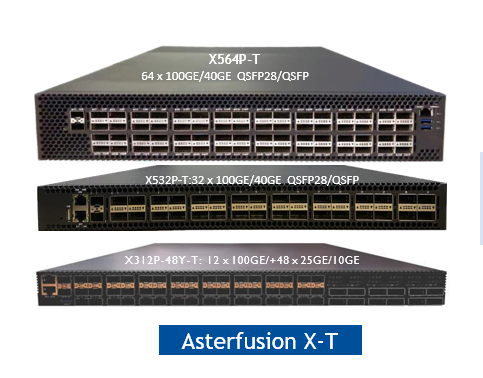
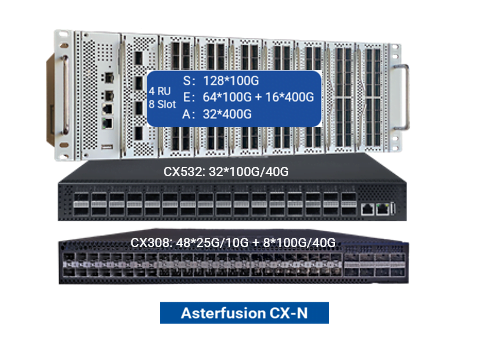
Conclusion
It is very important to understand the leaf-spine network architecture because it has significant advantages over the traditional three-tier network architecture. For data center network administrators, deploying leaf-spine network architectures and purchasing cost-effective and high-performance data center switches are essential to meet existing business needs and future data center growth.
Related Products
